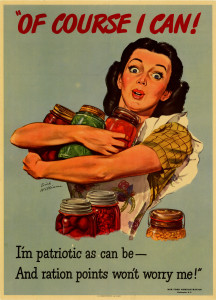This month I have been asked to present a program I call “The Home Front” to a couple of audiences. By the Home Front, I mean the United States from 1914 through 1918, the period then known as the Great War, but today referred to as World War I.
While the United States did not enter the war until April 1917, news of the horrors of war was widely disseminated in our country. The vicious invasion of Belgium enraged a vast majority of Americans. The German Kaiser and his war council notified the neutral Belgium government that they would soon be passing through the small kingdom to invade France. Furthermore, the Belgians were told not to resist, to get out of the way, and that when the war was over, they could have their country back. The young Belgian King Albert I responded that Belgium would indeed defend itself. With a very small army, the Belgians were almost defenseless against the huge German army. Yet, England, France and even Russia came to their defense militarily.
The United States made it a priority to ship food to the small nation. The plight of the Belgium people really tugged at American hearts. Actually America became the breadbasket for all Allied nations. U. S. citizens were encouraged to partake of “wheatless” and “meatless” meals, to preserve extra food they grew, and to grow Victory Gardens. Once the United States was officially in the war, President Wilson hired George Creel, a mastermind at public persuasion, to lead the nation in a campaign to share food with the rest of the world. The national food administrator Herbert Hoover told Americans “food will win the war.”
Hoover immediately began means to curtail anxieties over food shortages and counteract the impulse to hoard food. In the March 30, 1917, issue of the Greenville Messenger was a recipe for baking a cake without eggs, flour or butter, commodities already in short supply. Every available empty spot of land was commandeered for Victory Gardens. Even the Greenville High School football team tried their hand at farming in the backyard of a local banker. No mention was made of the results of the garden.
Local newspapers advised farmers to diversify, even to the point of suggesting celery become a specialty item from Hunt County. At the time, there was a group of small truck farmers in the area. Newspapers suggested they begin processing and canning their produce for export to Europe.
At the 1917 North Texas Fair, held annually in Greenville, a large tent was erected. Housewives from Hunt County and neighboring areas gathered to learn how to can beans, peas, corn, and other locally produced vegetables. Later the women met a rural schools, local churches, and homes to can their produce.
The sad news is that while thousands of tons of these locally preserved produce found their way to the docks where departing U. S. ships were loaded with men and supplies, the vast majority of food was left on the docks to ruin. There was such a rush to get the American Army to the front, that jars of green beans were at the bottom of the packing order. Hopefully, the women who worked so hard did not know the fate of their canning.

